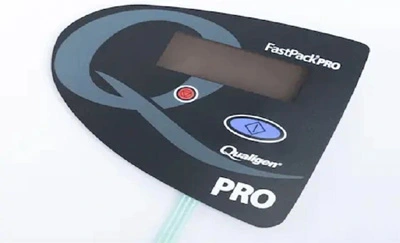
Customizing a tactile membrane keypad for specific applications requires careful consideration of various factors, such as design, functionality, and user experience. Whether you are designing a keypad for a medical device, industrial equipment, or consumer electronics, the right customization can enhance the performance and usability of the product. In this blog, we will discuss how to customize a tactile membrane keypad to meet the unique requirements of different applications.
The first step in customizing a tactile membrane keypad is to understand the specific requirements of the application. This includes determining the number of keys needed, the layout of the keypad, the type of feedback required (tactile, audible, visual), and any special features or functions that need to be incorporated. For example, a medical device may require a keypad with sterile properties, while an industrial control panel may need a keypad that can withstand harsh environments.
Once you have identified the application requirements, the next step is to choose the right materials and technologies for the keypad. Tactile membrane keypads are made up of multiple layers, including a graphic overlay, a tactile membrane layer, and a circuit layer. The materials used for each layer can impact the durability, tactile feedback, and overall performance of the keypad. For example, a silicone overlay can provide a soft, comfortable feel, while a polyester overlay may be more durable and resistant to chemicals and abrasion.
In addition to the materials, the technology used in the keypad, such as capacitive or resistive touch, can also affect the performance and functionality of the keypad. Capacitive keypads are more responsive and can support multi-touch gestures, while resistive keypads are more durable and can work with gloves or styluses.
The design of the keypad plays a critical role in the overall user experience. Customizing the design of the keypad involves creating a layout that is intuitive, ergonomic, and visually appealing. This includes choosing the right size, shape, and spacing of the keys, as well as selecting the font, colors, and icons for the graphic overlay. The design should also consider any labeling, branding, or regulatory requirements for the application.
In addition to the visual design, the tactile feedback of the keypad can also be customized to enhance the user experience. Tactile membrane keypads can be made with different types of domes or switches to provide varying levels of tactile feedback, such as a click, snap, or soft touch. The actuation force, travel distance, and sound of the keys can also be adjusted to meet the preferences of the users.
Once the tactile membrane keypad has been customized, it is essential to test and optimize its performance. This includes testing the functionality of each key, the responsiveness of the touch technology, and the durability of the materials. User testing can also help identify any usability issues or improvements that need to be made.
By following these steps and collaborating with a reputable keypad manufacturer, you can customize a tactile membrane keypad to meet the specific requirements of your application. Whether you are designing a keypad for a medical device, industrial equipment, or consumer electronics, the right customization can enhance the performance, usability, and overall user experience of the product.